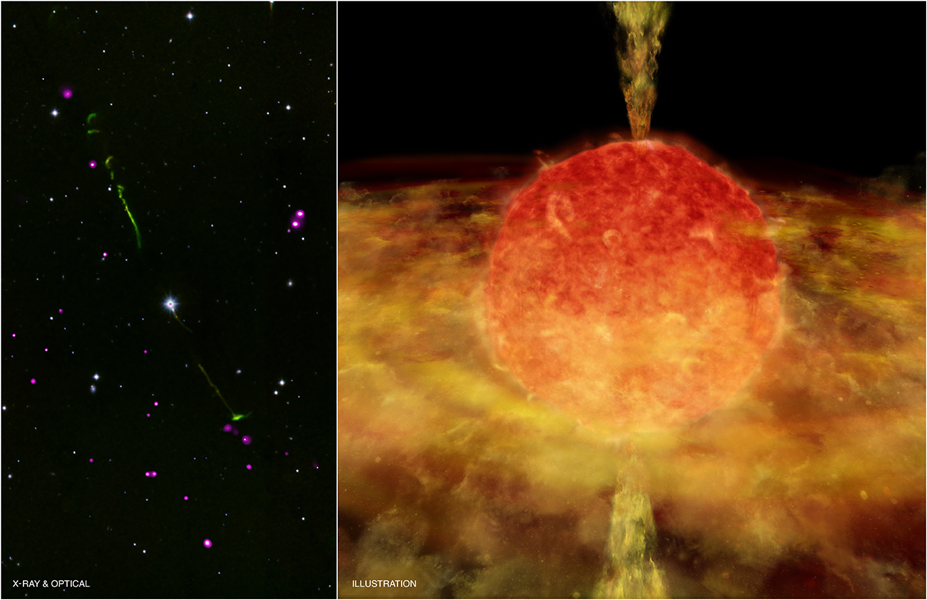
 Credit: X-ray (NASA/CXC/RIT/J.Kastner et al), Optical (UCO/Lick/STScI/M.Perrin et al); Illustration: NASA/CXC/M.Weiss
Credit: X-ray (NASA/CXC/RIT/J.Kastner et al), Optical (UCO/Lick/STScI/M.Perrin et al); Illustration: NASA/CXC/M.Weiss
Eaten by the Giant?
BP Piscium is an unusual star, very bright in the infrared, unseen in the optical, and possessing two enormous radio jets. The star is surrounded by a thick dust disk making it nearly invisible. X-ray radiation can penetrate through this disk, and observations with the Chandra X-ray Observatory have detected X-rays from BP Psc, the first time radiation of any type has been directly detected from the star itself. The image on the left shows the Chandra X-ray data superimposed in purple, along with an optical image (from the Shane telescope of the UCO Lick Observatory) in orange, green and blue. The optical image shows the extended jets emanating from either side of the star, colored in green. On the right is an artist interpretation of the region close to the star itself, showing our best guess about the geometry of the disk, star and jets. Jets and disks are usually characteristics of a very young, recently formed (or still forming) star. But such young stars are usually very bright and variable in X-rays, while the Chandra observation shows that BP Psc has a rather low X-ray brightness more typical of an older star. If so, what could produce the disk and jets around such an old star? Disks and jets are signs of the accretion of matter by the central star; astronomers suggest that BP Psc may be an old star that has entered its red giant phase, expanded, and swallowed up a nearby companion star or planet. A similar fate may await the earth - but not for another 8 billion years or so.
Published: September 27, 2010
<
HEA Dictionary ● Archive
● Search HEAPOW
● Other Languages
● HEAPOW on Facebook
● Download all Images
● Education ● HEAD
>

Each week the HEASARC
brings you new, exciting and beautiful images from X-ray and Gamma ray
astronomy. Check back each week and be sure to check out the HEAPOW archive!
Last modified Tuesday, 27-Feb-2024 10:09:59 EST


